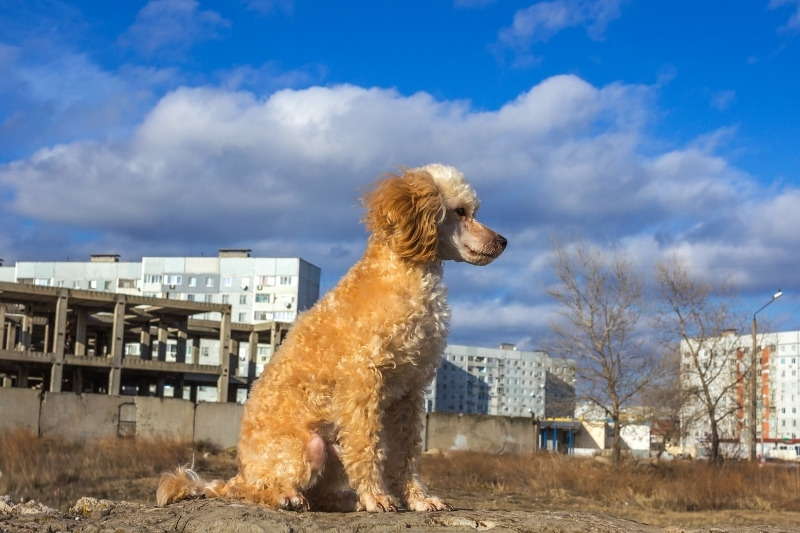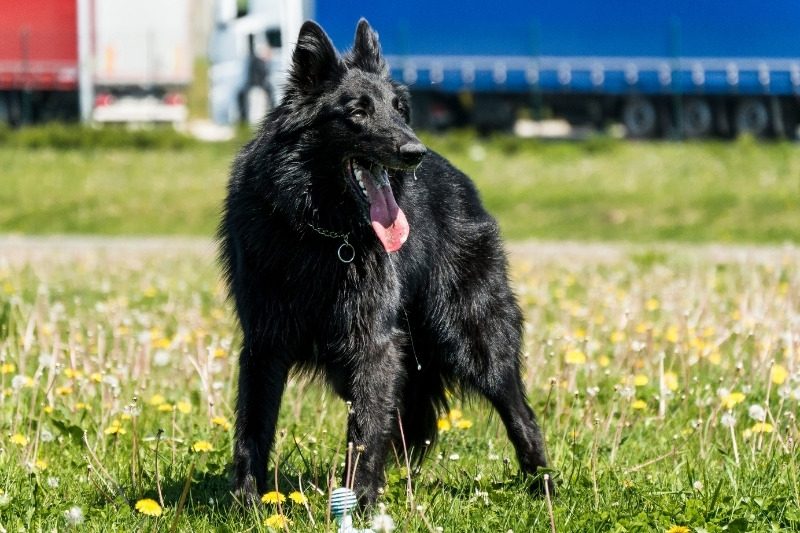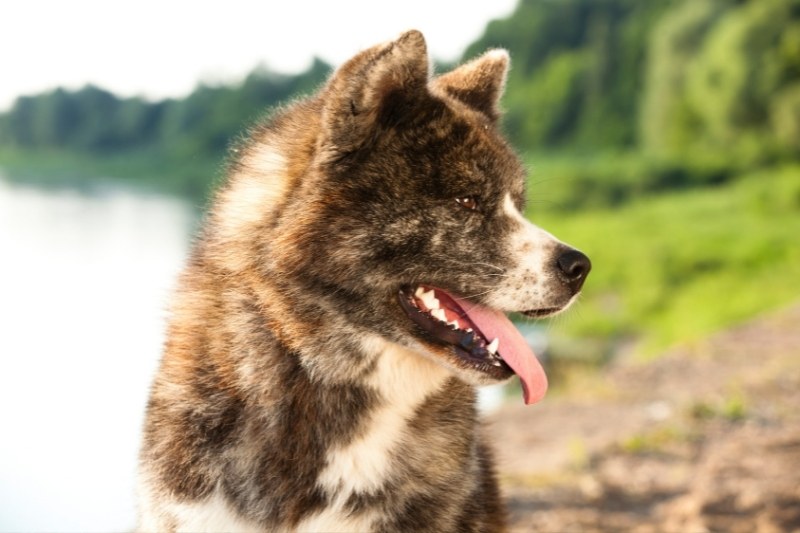All the Poodle colors explained

If you've ever crossed paths with a Poodle, you know just how eye-catching and striking their coats can be. Part of what makes this breed unique and desirable is that their coats come in a variety of colors, so even if you've met one Poodle, you certainly haven't met them all!
Understanding why Poodle coat colors differ is vital in knowing which color type resonates with you (and where it comes from). For example, white Poodles’ fluffy and striking coats may make you want to cuddle them as soon as possible.
But, you may be surprised to know how much detail goes into breeding different Poodle colors! Though it all comes down to genetics, breeders have developed specific ways to manipulate Poodle coats and create nearly a dozen individual color options.
Not all of them are created equal, though. Some coat colors are more common than others, and some are rare due to the precise breeding practices required to breed them.
So, what should you look for in a Poodle's coat color, and what does the color of your Poodle's fur mean? We'll answer these questions and more as we break down how coat color works and why.
How many colors of Poodles are there?
The American Kennel Club officially recognizes 11 different Poodle colors, from black to white and even red and apricot poodle coat colors.
To meet the standards for the breed, an even solid color at the purebred breed’s skin is acceptable, but not a coat with multiple colors. For example, Part-colored Poodles would be disqualified, according to the AKC, since the dog’s skin has two or more colors.
Do mixed colors exist in purebred poodles?
While countless mixed coat colors exist, they are commonly found in Poodles who aren't purebred.
Even if a Poodle's parents were both Poodles, if one or more of them was not purebred (meaning they had other dog breeds in their gene pool), their coat may take on multiple colors and even patterns.
However, we'll be focusing specifically on purebred Poodles that fit the AKC's standards for the breed.
Official 11 Poodle colors explained
The Poodle dog, both large and small, is a unique breed because of the versatility that comes with its appearance. In other words, no two Poodles look the same, with variance in color and look a crucial part of the breed.
After all, Poodles are known to be stylish dogs! Their colorful, curly, fluffy coats are relatively easy to care for and even customizable with regular grooming.
But which Poodle colors are officially recognized and accepted by the AKC, and what do they mean, if anything? So, let's take a deeper dive into the different Poodle colors and all you need to know about how the colors can affect your furry friend.
Black Poodles

A black Poodle is one of the most common types out there. This is likely because darker fur tends to result from a dominant gene. As such, the black Poodle may take precedence over other genes that might lead to a different coloring.
In many cases, the genes leading to more unique or lighter colors result from a mutation. So, both parents must possess the trait to successfully pass it so that their Poodles are born black.
Brown Poodles

Also common are brown Poodles, which are easy to find for the same reason black Poodles are.
A brown Poodle dog usually takes on a dark brown coat coloring, but the exact shade can vary from dog to dog. In addition, some brown Poodles may experience changes to their coat colors over time; it's not uncommon to see brown Poodle fur lighten with age, with their fur having a brown tint.
White Poodles

Next, the white Poodle dog is often sought after due to their fluffy, lighter shade of hair, standing out from other dog breeds and even other Poodle colors.
Although a white coat is a recessive trait, many breeders have mastered the art of keeping the white Poodle as light as possible.
However, some white Poodles are prone to health issues due to their selective breeding (researchers believe there is a link between the genes that lead to a white coat and deafness, for instance), but this coat color makes for a one-of-a-kind furry friend.
Blue Poodles

Don't let the name deceive you — blue Poodle dogs are not literally the color blue! Instead, a blue Poodle has a beautiful, cool gray that, in specific lighting, gives off a distinct blue undertone.
These furry friends differ from white and silver Poodles because their coat is much darker and has a rich, colorful base.
Some blue Poodles experience changes to their coat color as they age. For instance, they may take on a slight brown hue over the years.
Silver Poodles

Silver Poodles have a surprise up their sleeve: these Poodle puppies are born black! Over time, their coat color fades to silver, thanks to recessive genes.
As a result, the silver Poodle can be challenging to find and even more difficult to predict!
Silver-Beige Poodles
Do you have pictures of a Silver-Beige Poodle? Send it to us and we'll feature you!
Like their silver-coated cousins, the silver beige Poodle is born brown or black. Silver beige puppies grow into their true coat color over time.
The silver-beige look is accomplished by breeding two silver or blue Poodles with a Poodle possessing a recessive variant gene (which causes fur color to fade over time). The resulting puppy should develop a beige coat with silver spread throughout.
Café au lait Poodles
Do you have pictures of a Café au lait Poodle? Send it to us and we'll feature you!
Café au lait can describe a light-to-medium brown shade; think of the color of coffee with milk swirled throughout.
It should be no surprise, then, that the café au lait Poodle has a coat that starts darker and gradually fades. Remember that lighter shades result from genes that cause the color to fade — this is the case for the café au lait Poodle, too.
Over time, these Poodles are born brown and mature into a medium-brown, dark-cream hue.
Gray Poodles

Alongside with apricot and red colors, gray Poodles are included in the modern colors of the breed. However, not all gray poodles look the same: some may have light ash blue to asphalt coloring.
But gray Poodles are born black and gradually fade toward their destined gray coloring. By the time your Poodle reaches 8 months of age, their coat should be fully gray with the fading process ending by the 2-year mark. Although, the coat will look almost black at the ends of the coat.
Moreover, the coats for these adorable gray Poodles are softer than the other colored members. So, the poodles’ skin is more sensitive, resulting in a likelier chance of them developing sunburn during bright, hot days.
Cream Poodles

Popular for their cute faces and fluffy fur, cream-colored Poodles are positively loved and praised. But, the complicated breeding process creating these little guys makes them rare.
To create a Poodle with a cream coat, breeders must seek out the gene used in silver Poodles, but also those that create and fade an apricot (or orange-red) coat.
Red Poodles

Red Poodles result from a recessive gene, much like red hair is for humans. As a result, they aren't easy to find, and they may come with a hefty price tag when you do.
Some Poodles experience coat changes over time, particularly if they possess recessive genes that fade their hair color.
Apricot Poodles

Unlike red Poodles, apricot Poodles take on a bright and light red color, one that borders on cream in some dogs. If red Poodles are red, then apricot Poodles are vibrant orange.
Of course, this stunning coat color is the result of selectively breeding recessive traits. The apricot Poodle is hypothesized to be one of the last-developed Poodle color types out there.
What Colors are Purebred Poodles?
Purebred Poodles only have other Poodles in their family history. Additionally, both the mother and father of a purebred Poodle are also purebred Poodles.
Because of this, purebred Poodles should take on the appearance of solid-colored poodles.
Also, the importance of having purebred parents is because the inclusion of other dog traits and genes, even if they're recessive or don't manifest physically, can lead to a puppy that has a mixed coat.
Purebred Poodles can be any of the 11 colors we've discussed. This sets Poodles apart from other dog breeds, where one standard appearance is universal.
What is the Rarest Poodle Color?
The rarest Poodle color is apricot because of the nuance that goes into breeding and creating the coat color.
Many of the Poodle colors are considered rare because they rely on recessive traits that can be hard to come by.
In other words, the more selective breeding is needed to create a certain coat color, the rarer it will be.
Though these dogs are popular and bred at decent rates, the extremely high demand means that they can be less accessible than it may seem.
Other Poodle colors that tend to be hard to find include:
- Silver-beige poodles
- Red poodles
- Cream poodles
- Café au lait poodles
What is the best color of Poodle?
There is no best color of Poodle, but some Poodle colors might be better suited to your needs or desires.
If you're not prepared to handle heavy and regular grooming care, for instance, it might not be wise to choose a white Poodle (whose fur visibly dirties much faster than other Poodles).
There are some potential drawbacks to consider for some Poodle colors, too. For instance, some research suggests that dark-colored dogs might be at a heightened risk for some health conditions.
And, light or white Poodles may be more prone than others to developing problems like deafness.
So, it all comes down to what you want to prioritize. If you're fairly neutral about the color of your Poodle's coat, it might be best to opt for those that are easier to clean and care for.
On the flip side, if you have a certain look in mind, you'll want a Poodle puppy that has the genetic background to give your desired results.
There likely will not be a significant difference in the way your Poodle behaves or functions based on coat color, though some traits may be more common among certain hues due to the amount of close breeding creating them.
Key Takeaways & Final Thoughts
There's a lot to consider when picking a Poodle color: various options to choose from, each with its own potential pros and cons.
In this article, we've covered:
- What the 11 types of Poodle colors are, where they come from, and what they look like
- How genetics play into the color and characteristics of a Poodle's fur
- Potential drawbacks, if any, associated with each fur color
- Which Poodle colors are the rarest and why
As with all things related to owning a dog, it's important to take some time to really think through your options and make a decision that doesn't just make sense, but that you can commit to.
If you do decide to adopt or purchase a Poodle puppy, be prepared for whatever changes and care might be associated with their coat.
No matter what you end up choosing, always work with breeders who you trust. Ensure that health information, parental records, and other crucial safety details are readily available to you, and never trust breeders who refuse to provide this information.
After all, a healthy puppy is far more important than a puppy fitting a certain look.
Overall, Poodle coat colors can vary, and some colors can be hard to come by. This fact doesn't have to hold you back, though; with so many options to choose from, just about anyone looking to welcome a Poodle into their lives can find a good fit.
These majestic and strong dogs are wonderful pets and companions for more reasons than just their beautiful coat, but one that fits the bill certainly doesn't hurt!
We hope this guide has been informational and helpful, whether you already own a precious Poodle or are looking to add one to the family.

Siobhan Brier is an animal and dog lover who will rudely interrupt conversations to point out cute dogs in public when necessary. She works as a content writer and co-owner of a small content writing agency in English, Spanish, and Portuguese called Inkless. As an online worker she travels internationally, and she is currently based in Mexico. She loves reading and writing, and she recently finished a novel based on her time living on the remote Galapagos Islands, a place known for its plentiful, endemic wildlife population!








